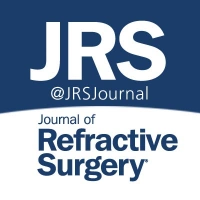publications

Archives of Ophthalmology and Optometry
Adam Cywinski, Paulina Bazgier
This prospective study evaluated the performance of the Hanita Intensity penta-focal intraocular lens (IOL) in cataract and refractive lens exchange (RLE) patients over an 18-month period. The results demonstrated strong visual outcomes at all distances, with high patient satisfaction and statistically superior distance vision compared to PanOptix.
Therapeutic Advances in Ophthalmology
Germán R. Bianchi
This ambispective, non-randomized study evaluated the visual performance, safety, and patient satisfaction of the Intensity SL (Hanita Lenses) five-focus pseudophakic intraocular lens (IOL) over a 24-month period. The study included 120 eyes of 60 patients who underwent femtosecond laser-assisted bilateral cataract surgery. At two years postoperatively, patients demonstrated excellent uncorrected visual acuity across far, intermediate, and near distances (binocular UDVA −0.05 ± 0.05 logMAR; UIVA 0.009 ± 0.05; UNVA 0.04 ± 0.06). Visual stability was maintained between the 6- and 24-month follow-ups. Dysphotopsias such as glare and halos were rare and mild. Patient satisfaction was remarkably high, with 95% reporting being "very satisfied" and 100% indicating they would choose the same IOL again. The findings support the long-term visual efficacy and quality-of-life benefits of the Intensity SL IOL.
Nature Eye
Jorge L. Alió et al.
This study assessed the refractive outcomes, optical performance, and quality of vision in patients implanted with the Intensity Hanita diffractive intraocular lens (IOL). The prospective, observational study included 64 eyes that underwent bilateral cataract surgery with Intensity IOL implantation, with evaluations conducted at 6 months post-surgery. Results indicated that 66% of eyes achieved uncorrected distance visual acuity (UDVA) of 0.10 logMAR or better. The defocus curve showed optimal vision at distance (0.02 ± 0.07 logMAR at 0.0 D) with stable performance through intermediate and near vision ranges (0.11 ± 0.08 logMAR at -1.5 D, 0.12 ± 0.12 logMAR at -2.5 D). Contrast sensitivity remained stable (p ≥ 0.06), and high-order aberrations were low, with a Strehl ratio of 0.12 ± 0.04. Mild halos and glare were reported but did not interfere significantly with daily activities, and the near activity visual questionnaire (NAVQ) indicated high patient satisfaction with near-vision tasks. These findings support the Intensity Hanita IOL’s effectiveness in providing clear vision across all distances through a five-foci distribution design that enhances depth of focus.
BMC Ophthalmology
Gustavo Goldman
This study examined the optical performance and safety of a newly designed multifocal intraocular lens (IOL) with five focal points (two additional "intensifiers") for cataract and presbyopia management. Conducted in Buenos Aires and Ramos Mejia, Argentina, the prospective, non-randomized observational study included 31 patients (61 eyes) who received bilateral implantation between March 2020 and November 2021. At the 3-month follow-up, all eyes achieved an uncorrected distance visual acuity (UCDVA) of at least 0.15 logMAR, with 93% achieving 0.1 logMAR and 44% achieving 0.0 logMAR. For intermediate vision at 80 cm, 98% of eyes achieved at least 0.1 logMAR, and 79% reached 0.0 logMAR. The results highlight the new multifocal IOL’s efficacy, particularly for intermediate and near vision, with high rates of spectacle independence and patient satisfaction.
HIGHLIGHTS OF OPHTHALMOLOGY
Kepa Balparda, MSc PhD et al.
This study aimed to assess the short-term refractive and visual outcomes following the implantation of the Hanita Intensity SL pentafocal intraocular lens (IOL) in patients with presbyopia. In a retrospective observational review, 20 eyes from 10 patients (70% female) who underwent immediate sequential bilateral surgery were evaluated over three months. Results showed that 100% of patients achieved visual acuity of 20/25 or better for both near and far distances, and 20/40 or better for intermediate distances. The defocus curve indicated excellent visual performance from infinity to approximately 33 cm, allowing functional vision at all distances. Additionally, all patients reported complete independence from glasses. These findings suggest that the Hanita Intensity SL IOL is a safe and effective option for achieving spectacle independence in presbyopic patients.

JRS, Journal of Refractive Surgery
Dr. Bellucci et al.
A clinical study comparing the new Intensity pentafocal IOL and a trifocal IOL showed that the Intensity IOL provides superior intermediate vision and a flatter defocus curve, with comparable distance and near vision. Patients reported fewer optical disturbances, such as glare and halos, with the Intensity IOL. Further research will clarify the specific benefits of the pentafocal design.